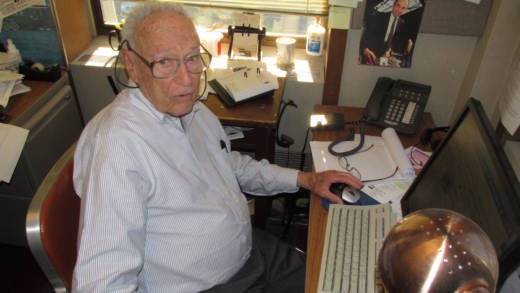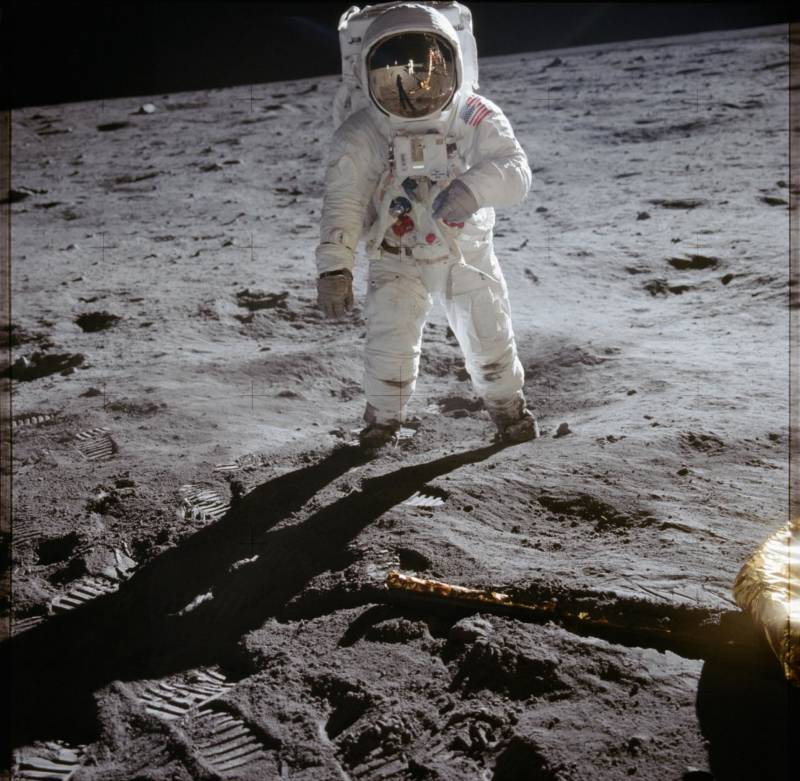“I remember there was a moment of silence when the two guys climbed out of the spacecraft and actually set foot on the moon,” Perlman said. “And we typed our stories as fast as we could.”
Larger media, such as the The New York Times and the Post, had sections of the room to themselves, set up like minibureaus. They also had the luxury of teletype machines, devices that could send text over a phone line.
“Reporters like me, all by ourselves, had a desk and that was all,” Perlman says. “But the desk had a typewriter.”
Western Union clerks walked up and down the aisles. Perlman typed a few paragraphs at a time, put his newspaper’s name at the top, and filed his story in sections by telegraph.
On July 21, 1969, the Chronicle ran Perlman’s front-page article on the scientific observations that were already pouring in. Perlman’s lead reads:
Two men and a spaceship began to re-write the science of the solar system last night. Within minutes of their landing on the moon, in an exploration televised for all the earth to watch, they found unexpected rocks, collected uncontaminated nuclear particles frim the sun and examined craters of curious shapes and sizes. The rocks may well prove the existence of volcanic activity. Perhaps eons ago, perhaps very recently.
Subsequent missions have confirmed the moon’s history of volcanic activity.
How long did it take to file this story about such a momentous event?
“A hell of a short time. I dunno, 20 minutes? You know, deadlines are deadlines.”
And what was it like to be part of a day humans will probably still pay homage to in a thousand years, assuming we’re around? At the time, Perlman didn’t think that way.
“I guess that’s because there wasn’t a lot of poetry in me,” he says. “I was covering a damn story! The important thing was to meet a deadline. Not to think about the implications in mankind’s quest for knowledge.”
After the moon landing, he wrote about virtually every planetary mission and discovery humans have made.
“It’s only much later that I’ve had a chance to stop and think, golly I was really part of a period of exploration that isn’t going to happen again until we go beyond the solar system and look at what is out there beyond.
“It’s only when people like you ask me a question that I stop and think a little poetically maybe about being part of human exploration of the unknown.”

